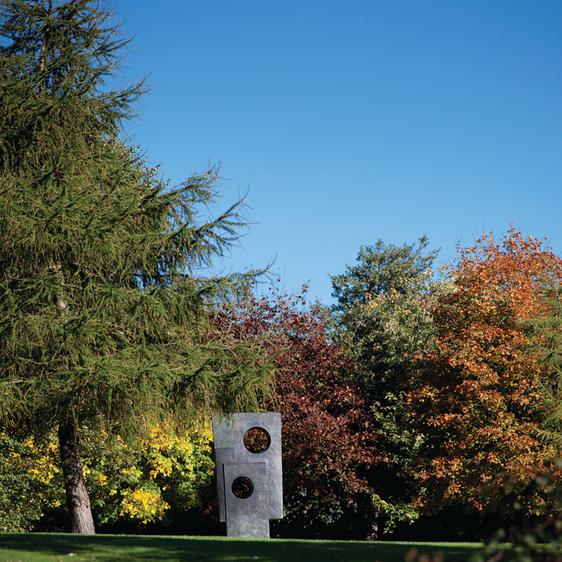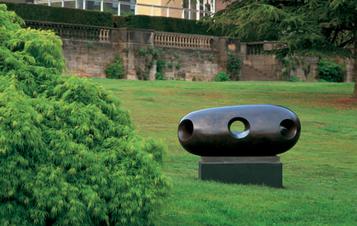
Barbara Hepworth: Centenary Exhibition
– Bothy Gallery, Outdoors, YSP Centre, PavilionAbout Barbara Hepworth: Centenary Exhibition
The profound effect of the West Yorkshire landscape on Hepworth's work resonates through the exhibition.
- Yorkshire Evening Post
Complementary exhibitions at YSP and Tate St Ives celebrated Barbara Hepworth's centenary in 2003. Both exhibitions drew on new insights into Hepworth's work and included some of the artist's most important sculptures, some not seen in the UK for many years.
Rather than a chronological survey, the exhibitions presented Hepworth's work in nine sections, each focused on a theme or aspect of her production. Some looked at her development of a particular motif over a period of time, others at a single body of works from a certain moment.
Both exhibitions highlighted Hepworth's sensitivity and attention to her materials as the sculptures in each section were confined to a single material: wood, stone, marble, or bronze. Drawings and paintings were integrated to show how she explored similar concerns in two dimensions. Works shown in the open air at YSP included: Dual Form, 1965; The Family of Man, 1970; Conversation with Magic Stones, 1973; Two Figures, 1968; Rock Form (Porthcurno),1964; Construction (Crucifixion), 1966; River Form, 1965/1973; Two Forms (Divided Circle), 1969; Sea Form (Atlantic), 1964; and Curved Reclining Form (Rosewall), 1960–2.
The YSP exhibition was co-curated by art historian and the artist's grand-daughter, Sophie Bowness.
You might also like
More- Art Outdoors

Barbara Hepworth: Squares with Two Circles
Squares with Two Circles is a large bronze work by Barbara Hepworth. The sculpture stands on the Hillside at YSP near to Hepworth's The Family of Man. The two circular apertures provide 'windows' to the landscape beyond. - Art Outdoors

Barbara Hepworth: The Family of Man
- Profile

Katy Wickremesinghe
- Art Outdoors

William Turnbull: Ancestral Figure
The shape of Ancestral Figure could be a tablet containing written information, or a tombstone marking a grave. The surface is covered with shapes, lines, ridges and grooves. These might be facial features but they also resemble ancient symbols and languages.


